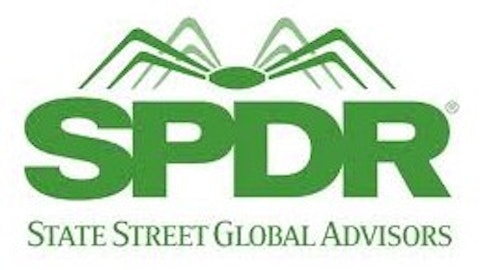Some might say Bill Gross is the greatest bond manager in the world.
The co-founder of one of the world’s largest investment firms, Pacific Investment Management (PIMCO), has a reputation that was built upon an impressive string of gains through PIMCO’s flagship fund, the PIMCO Total Return Instl (MUTF:PTTRX). The world’s largest bond fund, with net assets of $281 billion, has performed especially well since the financial implosion of 2008, producing huge gains as investors shifted away from equities and fled to the safety of fixed-income assets.
But in spite of this incredible success, Gross isn’t kicking back and resting on his laurels. In fact, he just released a brand new investment that directly competes with his highly successful Total Return mutual fund.
If this sounds like product cannibalization, then you’re exactly right.
The bond investor is borrowing a page from the Steve Jobs playbook: Stay paranoid about your competition and constantly find new ways to innovate your products and space. The Total Return manager recognized that in a world of growing financial innovation, he would have to cannibalize his own business or one of his competitors would.
So with that in mind, Gross created the PIMCO ETF Trust (NYSEARCA:BOND), an exchange-traded fund (ETF) that went public in March and replicates Total Return’s performance. This is great news for investors, because this new ETF offers the best of both worlds: Exposure to the Total Return fund and loads of financial innovation.
For starters, BOND provides investors with the additional transparency that is unavailable through its mutual fund counterpart. That’s because actively-managed ETFs are required to disclose their portfolio holdings on a daily basis, providing investors with much more insight into short-term fluctuations and additional insight into PIMCO’s long-term outlook.
Beyond transparency, BOND is also a great bargain, with an expense ratio of 0.55% — well below the 0.90% charged for the Total Return A shares available to regular investors. It is also only a pinch more expensive than the 0.46% charged to the most powerful financial institutions in the world for Total Return’s institutional class shares. Speaking of institutional class shares, not only are regular investors restricted from buying them, but even if they could, then they would need a minimum investment of $1 million, which would make it extremely unaffordable to most people. Even the fund’s common shares require a minimum $1,000 investment. BOND’s “no minimum” investment makes it that more attractive. BOND also enables investors to avoid paying the 3.75% front load that buying shares of the Total Return mutual fund requires.
Because of all of these advantages, the early results for BOND have been great, with shares up 10% on the year. This is more than double the performance of its benchmark index, the Barclays US Aggregate Bond TR, which has been up just 4.4% in 2012.
That amazing performance was also driven by this ETF’s lower assets under management. Starting with a smaller base of $100 million under management in February enabled Gross to utilize strategies for which his $280 billion mutual fund is simply too big. But the Street has already noticed the ETF’s awesome performance, pushing BOND’s total assets under management to more than $3 billion in the short nine months the ETF has been around.
Risks to Consider: As you can see in the chart above, bonds have seen huge gains in the past three years as the Federal Reserve has worked feverishly to push interest rates to record lows to support theeconomy. Although the trend in interest rates is still low, with the federal balance sheet looking quite bloated, interest rates will eventually have to increase.
Action to Take –> Gross became the undisputed “king of bonds” through his incredibly successful Total Return mutual fund. But his new BOND looks to improve on that model with additional transparency, a competitive fee structure and no minimum investment requirements. And since the new ETF is handily beating its index, investors have now a new strategy to pump up their fixed-income returns.
This article was originally written by Michael Vodicka, and posted on StreetAuthority.






